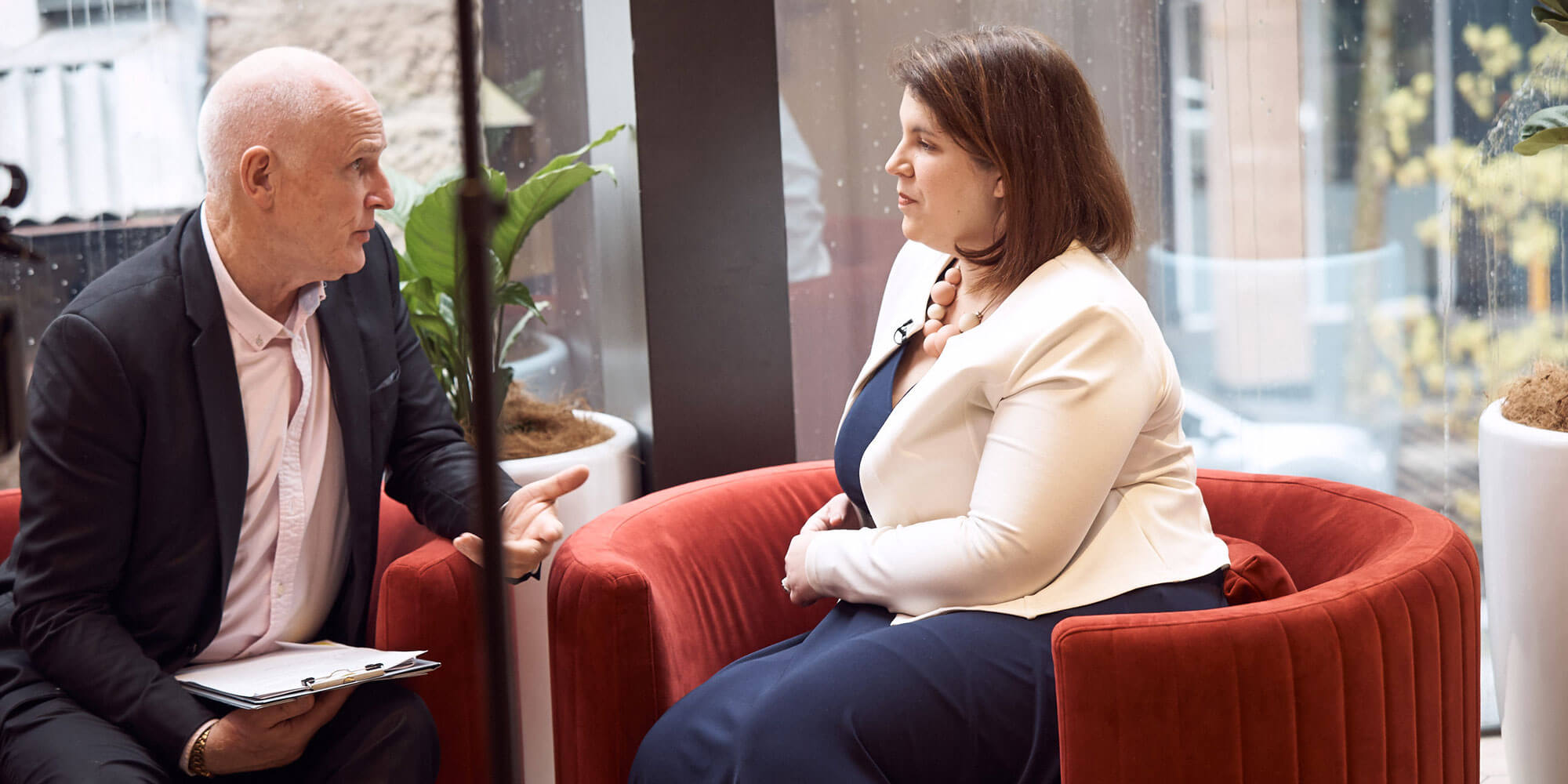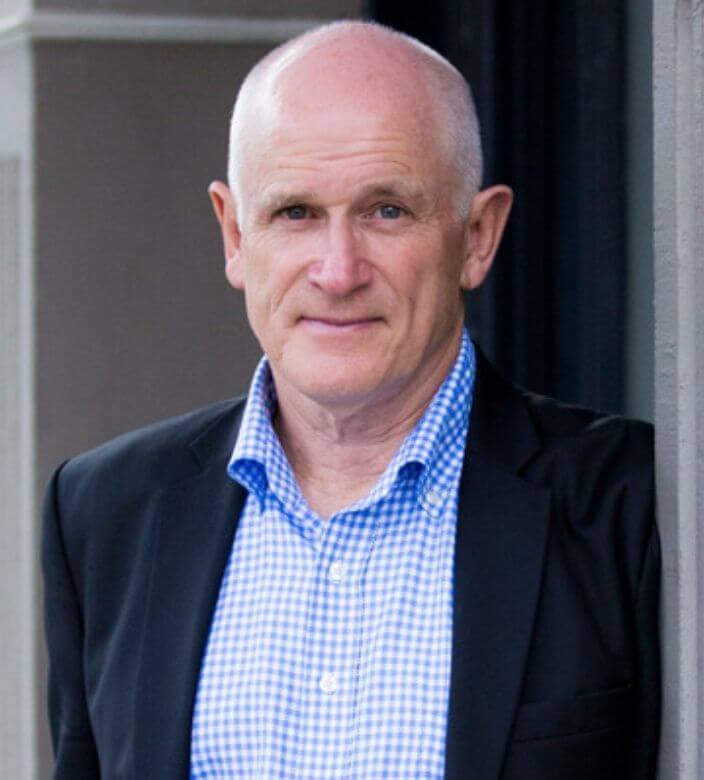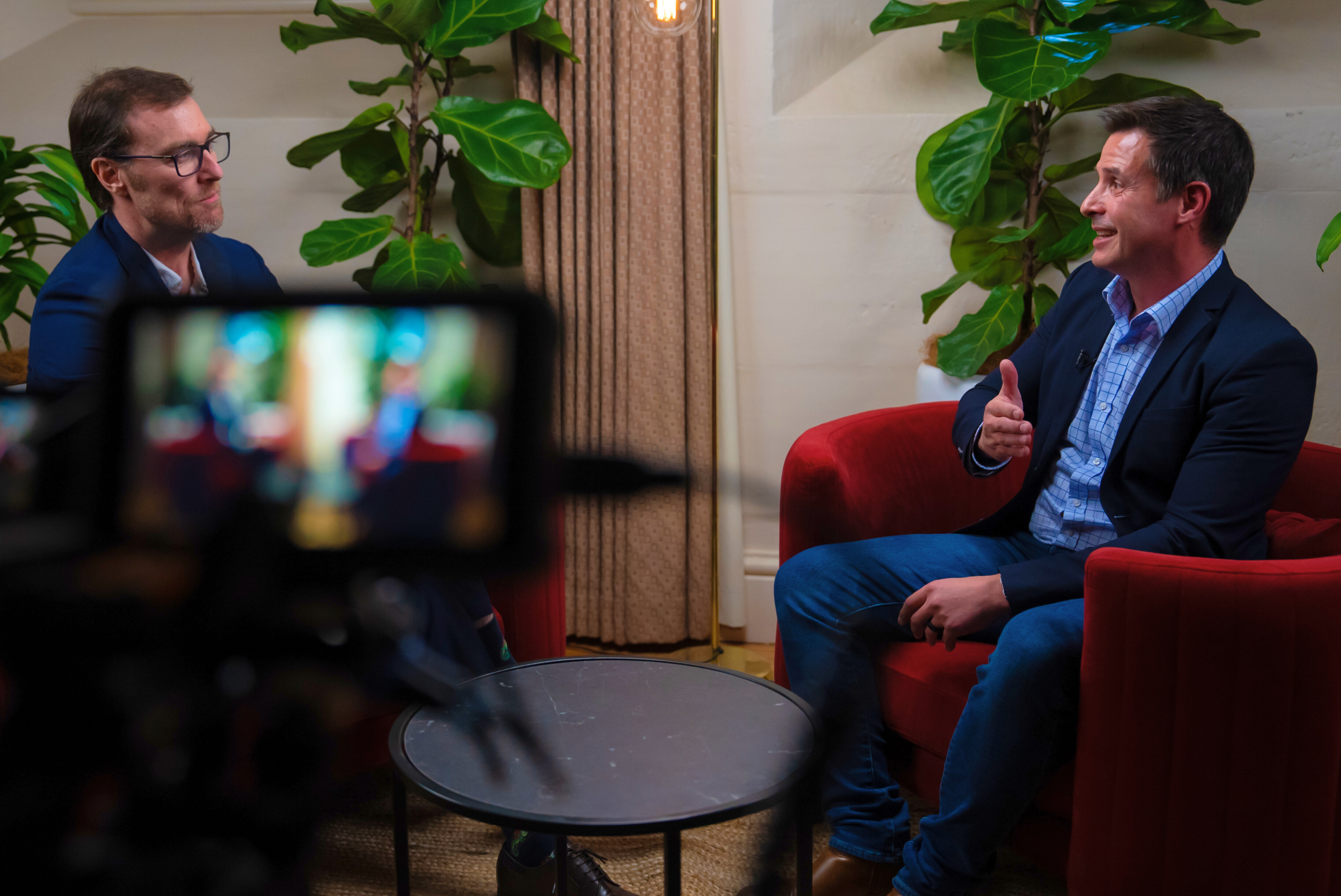Julia Steel has led significant technology transformation and business change for over two decades, turning great strategies into reality and delivering benefits to organisations around the world.
Julia joined ADAPT’s CIO Edge thought leadership as a Change & Stakeholder Buy-in Expert, advisor and author of “Buy-in: How to Lead Change, Build Commitment and Inspire People.”
Sitting down with our Senior Analyst Peter Hind, she discussed the business literacy of a CIO, what it means to do data-driven business, and the effectiveness of change initiatives.
Peter Hind:
We spoke before the conference and what, you gave me some thoughts that I’d like to delve a bit deeper in. And one of the things we were talking about is a lot of people in IT come up through the technology ranks. They’re technically proficient and their capabilities then get them elevated to become the IT manager and that then leads them to become a CIO.
You said though, that critical for the success of those people is a need to evolve from their heritage and roots into a more business literate approach, can you explain a bit more what you’re thinking about there?
Julia Steel:
I reflect on my own career, I started as a computer scientist, very technical programming. And then, you get good at that and then people, as you said, they elevate you up to give you a team and then sooner or later you find yourself as a manager and a leader.
But to translate what you technically know into the business problems that they want to hear, to be able to partner with them in a different language, it’s a ‘we’ language not an ‘I’ language.”
It’s solving business problems first, not talking about technical solutions first, it’s taking one hat off and putting another hat on, really and having a dialogue.
Peter Hind:
There are aspects that where you must let go of that, you must not want to be the problem solver you must let somebody else taking that. That must be quite challenging for people who see their worth as technical proficiency.
Julia Steel:
I was having a great conversation here yesterday, we were talking about how IT refers to the business as the business. We’re like well, that’s creating a wall that doesn’t need to be there anymore.
We shouldn’t be referring to people as the business, they have names, so why don’t we talk to them as real people, not some entity that’s the business.

Peter Hind:
Drawing on your own career, when were the watershed moments for you where you started to realise, “actually I’ve got to think ‘we’ not ‘I’ and I’ve got not to be the solver problem, but I’ve got to engage team members to help solve things.” What were the sort, areas that…?
Julia Steel:
I was given a couple of projects; I’m a programme director by trade, who was given a couple of projects that their business case was inherently technical and was really struggling to get buy-in from the business even though the problem was very clear, well the technical problem was very clear, getting engagement from the business was a real struggle.
It wasn’t until I started to reframe the problem in the business language. Hence, the productivity, efficiency, customer experience, even employee experience, that people really started to go, “Oh, now we see where you’re coming from, and we’re on board”, but that was a long journey for me at the time than it probably could have been.
Peter Hind:
Well, it’s interesting. What I’m hearing you say it’s not blaming people for not understanding you. It’s a recognition that I have to change how I engage people if I want to get different outcomes.
Julia Steel:
How we were talking yesterday about when we grew up in IT that it was something that happened in the dead of night that specialist people do, and now everyone thinks they can do it.
You speak to a lot of business people, and they think they know what IT is. So we’ve got to balance their perceived knowledge and their expertise of what they want with what we know. It’s not we’re the experts anymore.
Peter Hind:
Well, as far as the business is concerned, a little knowledge can be a dangerous thing.
Julia Steel:
Absolutely. Thanks to doctor Google, everyone knows everything.
Peter Hind:
Now we talk. We’ve also spoken beforehand about CIOs are sparring to have a seat at the table. And is that really where that you can make change happen? If you haven’t got that seat at the table, is it still possible for a CIO to be an influencer and help drive change?
Julia Steel:
This is a fascinating conversation, and everyone says it. CISOs say it, CIOs say it, CDOs say it, HR executives say: “everyone wants a seat at the table. We need a bigger table.” But I think I think there are two things that I look for.
Even if you have a seat at the table, do you have a voice, at that table?”
It’s easy to say that you’ve got a seat at the table, but can you actually influence that conversation when you’re there? What conversation do you want to influence?
CIOs can have roles from maintaining IT all the way to being the visionary, transformative CIO.
Which of those seats do you want? Do you want to have a visionary conversation? Is that something that your executive actually want to hear? Are they bought into that vision, or are you a seat at the table to make sure IT works? And they’re two very different seats, I think.
Peter Hind:
What I hear you say, it almost has a finger on the pulse about what the business aspirations are and being measured at that and tempering your approach against that temperament.
Julia Steel:
I agree. If your executive wants you to have a seat at the table but it’s in a “keeping the business running” kind of way, and you want to be a visionary CIO, you have to ask yourself, do you actually want that seat, or are you better off having a seat somewhere else?
Peter Hind:
We’re talking about data-driven businesses. We’re talking about the Ubers of the world, the Amazons, the Googles. What does really being a data-driven business entail for a more traditional organisation?
Julia Steel:
This whole data-driven conversation is quite fascinating. It’s almost like tech has started at ones and zeros, and we’ve come full circle back to the ones and zeros again.
It’s been a hell of a journey, but I think there’s one thing having the data, it’s something else having the insights, and I think it’s very easy for us to collect lots of data.
How do we actually turn that into something that means something for our organisation and our businesses?
I think the Ubers of the world, where they’ve started there, I can see why they’re getting lots of value, but if you’re a traditional business or you’ve got a legacy business to think about, trying to harvest that data in a meaningful way across lots. Lots of systems are a completely different problem set than being a native digital business.
Peter Hind:
There’s that willingness and need for an experiment. I mean, it’s not as if having that data you get eureka moments. You only get it because people are cogitating on what’s there.
Julia Steel:
Being willing actually to do something about it. Like if your data says that half of your customers hate one of your products, but that product makes you the most money, are you actually going to do something about it?
It’s good to have the insights but you still got to take the action with that I think.”
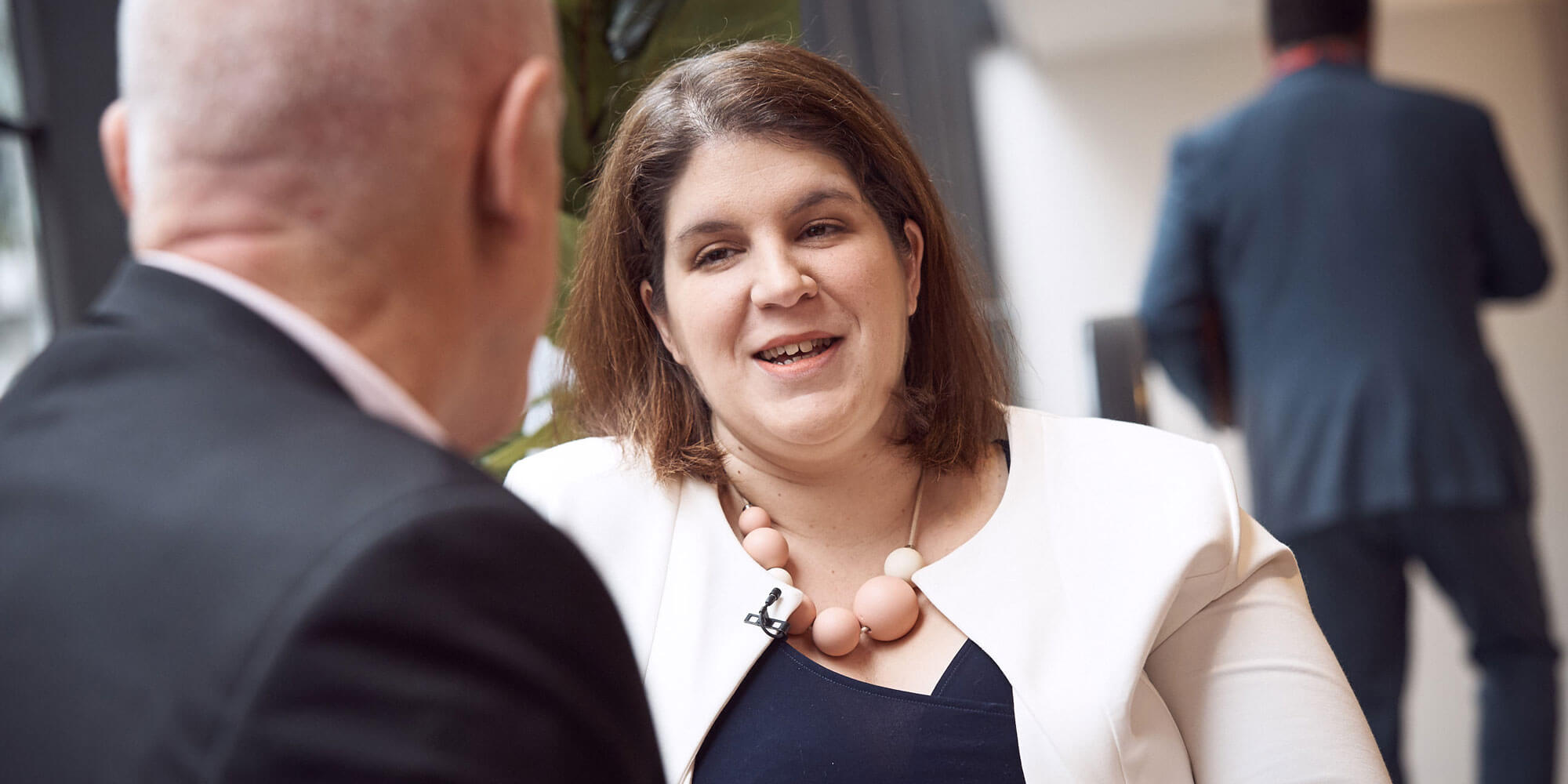
Peter Hind:
That’s a very interesting point because what I’m hearing you say there is, there is a need for CIOs to be proactive and some of that proactivity is confrontational. It’s challenging people and willing to stand your ground in some of these discussions.
Julia Steel:
Oh, absolutely!
One of the biggest programmes I ran was a digital programme for a large telco here and we looked at a lot of the data and there was one particular part of a process where we said this is just, we don’t need this process anymore.
The business just responded with, “but that’s x number of people and that’s us, you’re talking about us, you can’t get rid of us!” and we’re like, “but the data says that we don’t need you”.
One part of the conversation but behind data there are customers, there are people, there’s the process and we’ve got to be willing to do something with it I think, that’s what data-driven means to me.
Peter Hind:
Okay, now you used the word there, process and when we had this discussion beforehand you were talking to me about CIOs need to take more processes when they’re starting projects and initiatives and transformations, they need to think much more in a process mindset rather than a technology mindset.
Could you elaborate a bit more there?
Julia Steel:
I think probably my biggest reflection of a career in tech is that it’s a solution.”
It’s a solution to what used to be in many cases a manual process and I think sometimes we get too caught up in the technology that we forget the process and the people that run it and I think a lot of the problems are actually in the people and the process, not the technology.
Our job in digitising business is not, to not recreate processes as they are, it’s to actually streamline those processes. We don’t want to just create the same process in a digital way, we want an inherently better, process.
We can only do that if we’ve got the capability in our business to have that conversation with the business.
Peter Hind:
That gets back to your original point, talking about the language of the building, the processes, the language that they’re familiar with.
Julia Steel:
If you look at the way a lot of digital HR teams are going, there’s, it’s a multifaceted team.
We’ve got product donors, business analysts, technical experts all working together and they’re all working together because they need to understand the business and the technology, together.
Peter Hind:
You wrote a book about all these things and one of the things you mention in this book is that every organisation in some ways, wants IT to be a help with the transformation, the rejuvenation of their organisations, making them relevant.
But you said only 17% actually get any traction with their initiatives, why do you think so many organisations are ineffective in their change initiatives?
Julia Steel:
There are a few things. We all come from a place of, these are our ideas and they’re the only ideas in the business. But if you actually look across the business, there are ideas coming from IT, HR, procurement, you name it, every vertical in the business has ideas.
What happens at the highest level, what makes your ideas better?
In the 40 hours of a week, why should I spend those hours working on your idea over mine?
There’s an inherent mobilising and some of the conversations that were here yesterday around saying no is a good thing, how do you actually get to the ideas that matter in your business?
I think that’s one part behind the 17%. I think another part is we just inherently underestimate how hard some of the changes. A lot of the technology actually at the moment is quite simple.
We’re taking things off the shelf and implementing them. But giving it to 5 people versus 500 versus 5000, 50,000, they’re very different, different problems and it’s the people and the process but together we were talking about, how do you get those people to buy into using a new system versus the old one.
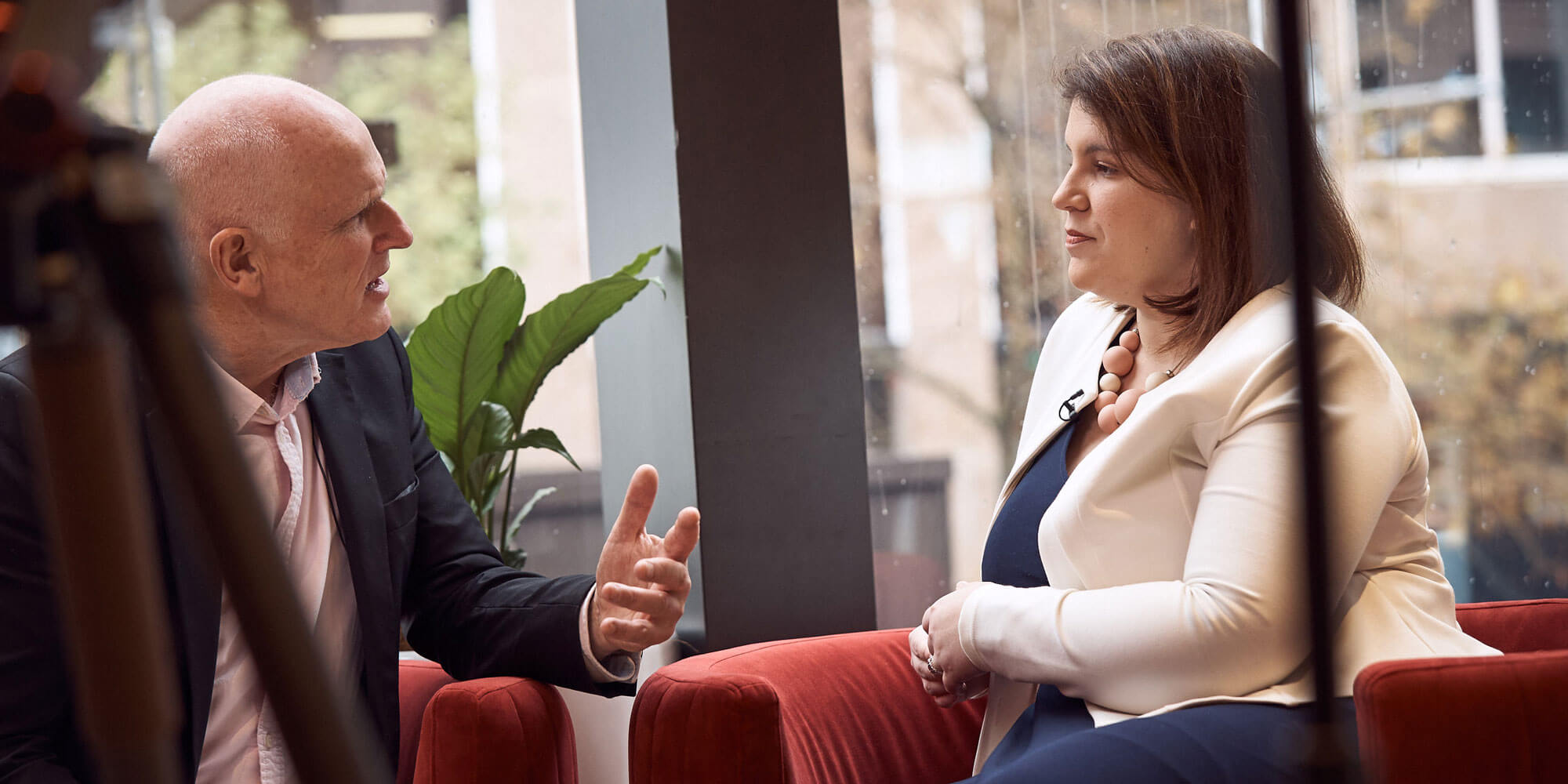
Peter Hind:
I get the feeling what you’re also talking about is as you’re on a transformation journey, people tend to be very ambitious about what they want to do. But sometimes, doing it in smaller size pieces gives people the confidence where they’re getting some evidence that actually this is working, and it cements their buy-in to the process.
Julia Steel:
Running a two or three-year programme and coming out at the end and going ta-da. Right, we’re not in that world anymore. It doesn’t exist.
They want to see drops of software, they want to see things that they can touch and feel they want to see the needle moving in terms of customer uplift or employee experience.”
They want to see that and see it creating that momentum, and I think the more we can do early, the better.
Peter Hind:
Why then do you think Agile has all those implications iteratively, evolution, stand-ups, engagement? Why do you think people are getting this negativity that seems to be rising towards Agile?
Julia Steel:
There have been many versions of Agile. There was Lean, Sigma, and there was Quality, TQM, and there was even Waterfall when it first came out. It was a revelation to some, to some organisations.
And I think there’s a certain bit of, we’re looking for a silver bullet. And then it’s like ”Oh! here we go, here’s another thing that we can try to deliver”, but there’s no process, there’s no framework that is going to make it work in your business, there are tools that you can use, but it’s not the solution, it’s the toolbox.
You’ve still got the people are the solution.
Peter Hind:
Yes.
Julia Steel:
That’s where the progress is.



















